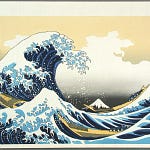The pro-labour model is based on the idea that governments are moving away from pro-business policies to pro-labour polices. This is driven by an electorate that is increasingly disillusioned by pro-capital policies and voting for populist politicians and ideas. At its simplest, its means that demand is very strong, inflation is structurally higher, and central banks are under constant pressure to keep interest rates high. This led me to be naturally long gold and short treasuries (GLD/TLT). My view was that the 1970s would be a natural end game for this trade.
The corollary of this view is that asset prices would struggle. Higher rates would suck the liquidity from asset markets. In particular this should be true of speculative assets. Now if I torture financial market data, I can make this assertion seem true. If I look at equal weighted returns for example, or if I convert Nikkei returns into USD, I can say, “Hey look, assets have not done that well!” But the truth is that outside of China, western equities have done pretty well. US equities do not look to be in a lagging the gold market, one of the best commodities out there.
For the first time in nearly 5 years, I have been back to Australia. The 40 plus hours of flying time (ignoring time spend at airports waiting for flights) give you a lot of time to ruminate. And rumination, has led me to realise I have been too “old man” in my thinking. A fact of life as you get older, its easier to think things will be like the past, rather than allowing your mind to accept changes in the world - and I think I have been guilty of exactly this type of thinking. My pro labour thesis is based on the post World War II period, which definitely was pro-labour. But there was a cold war going on too. How can we think about the cold war from 1950 to 1990, and apply it to the new cold war, starting circa 2015?













